09012018
SCULPTURE
ARTEFACT SFB42
GLAS
ALUMINIUM
BRASS
MOSS PROBES
ROCK SAMPLES
CHRYSTAL SAMPLES
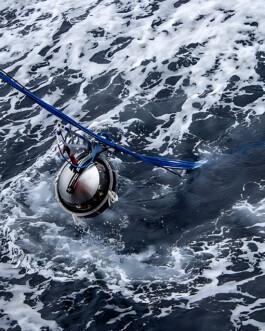
The Cascadia Basin will hold a cubic kilometre neutrino telescope.
It is the water‘s capacity to hold neutrino intra-actions that make it a relevant site for experimental physical
observations of the imperceptible. In the last few years the detection of astrophysical neutrinos has given physicists an incredible opportunity to observe processes that are inaccessible to optical telescopes. As neutrinos interact very weakly with matter, being for this reason faithful messengers, they interact very rarely with a detector. The size of the detector becomes extremely relevant for collecting enough data that could expand the sense of physicists a bit further into the ‘dark sector’ of matter-energy. After a successful development of a neutrino detector in the ice of the South Pole, a collaboration of physicists from Germany and Canada are now testing the the waters of Cascadia Basin. „STRings for Absorption length in Water“ (STRAW-B) will be deployed in the Pacific Ocean in July 2020 with our artworks submerged with it.
ARTEFACTS will relocate mineral and biological traces from the Gran Sasso Mountain in Italy, where the collective SFB42 went on an ethnographic field trip in 2018, as part of their first collective project. At the underground Laboratori Nazionali del Gran Sasso, located in the centre of the mountain, there have been several experiments detecting neutrinos, which the group visited, as a catalyst for an interdisciplinary collaboration. Now these two distant times and spaces will be linked together, from the dark cave to the dark deep water, both strange and normally inaccessible places used by physicists to observe elementary particles of astronomical origin. These samples are also curious talismans, providing good spirits and luck for the deployment of the detector, the collection of data, and the ONC/P-ONE collabortion.
Many Thanks to Jol Thoms, Prof. Dr. Elisa Resconi, Diogo da Cruz and Simon Freund
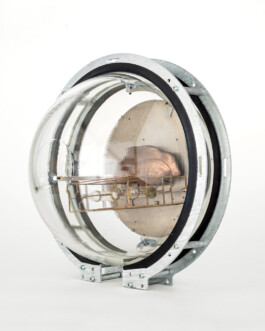
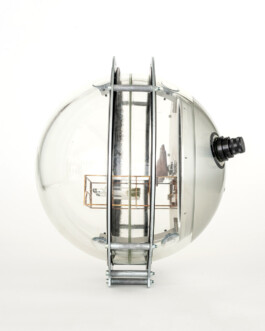
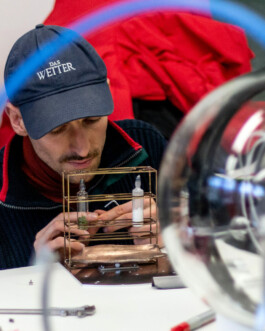
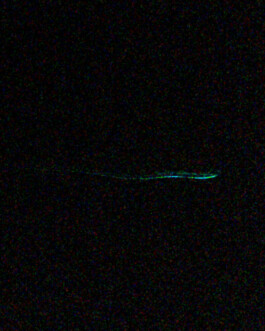
09012018
SCULPTURE
ARTEFACT SFB42
GLAS
ALUMINIUM
BRASS
MOSS PROBES
ROCK SAMPLES
CHRYSTAL SAMPLES

The Cascadia Basin will hold a cubic kilometre neutrino telescope.
It is the water‘s capacity to hold neutrino intra-actions that make it a relevant site for experimental physical
observations of the imperceptible. In the last few years the detection of astrophysical neutrinos has given physicists an incredible opportunity to observe processes that are inaccessible to optical telescopes. As neutrinos interact very weakly with matter, being for this reason faithful messengers, they interact very rarely with a detector. The size of the detector becomes extremely relevant for collecting enough data that could expand the sense of physicists a bit further into the ‘dark sector’ of matter-energy. After a successful development of a neutrino detector in the ice of the South Pole, a collaboration of physicists from Germany and Canada are now testing the the waters of Cascadia Basin. „STRings for Absorption length in Water“ (STRAW-B) will be deployed in the Pacific Ocean in July 2020 with our artworks submerged with it.
ARTEFACTS will relocate mineral and biological traces from the Gran Sasso Mountain in Italy, where the collective SFB42 went on an ethnographic field trip in 2018, as part of their first collective project. At the underground Laboratori Nazionali del Gran Sasso, located in the centre of the mountain, there have been several experiments detecting neutrinos, which the group visited, as a catalyst for an interdisciplinary collaboration. Now these two distant times and spaces will be linked together, from the dark cave to the dark deep water, both strange and normally inaccessible places used by physicists to observe elementary particles of astronomical origin. These samples are also curious talismans, providing good spirits and luck for the deployment of the detector, the collection of data, and the ONC/P-ONE collabortion.
Many Thanks to Jol Thoms, Prof. Dr. Elisa Resconi, Diogo da Cruz and Simon Freund




POLICY + AGB + PORTFOLIO